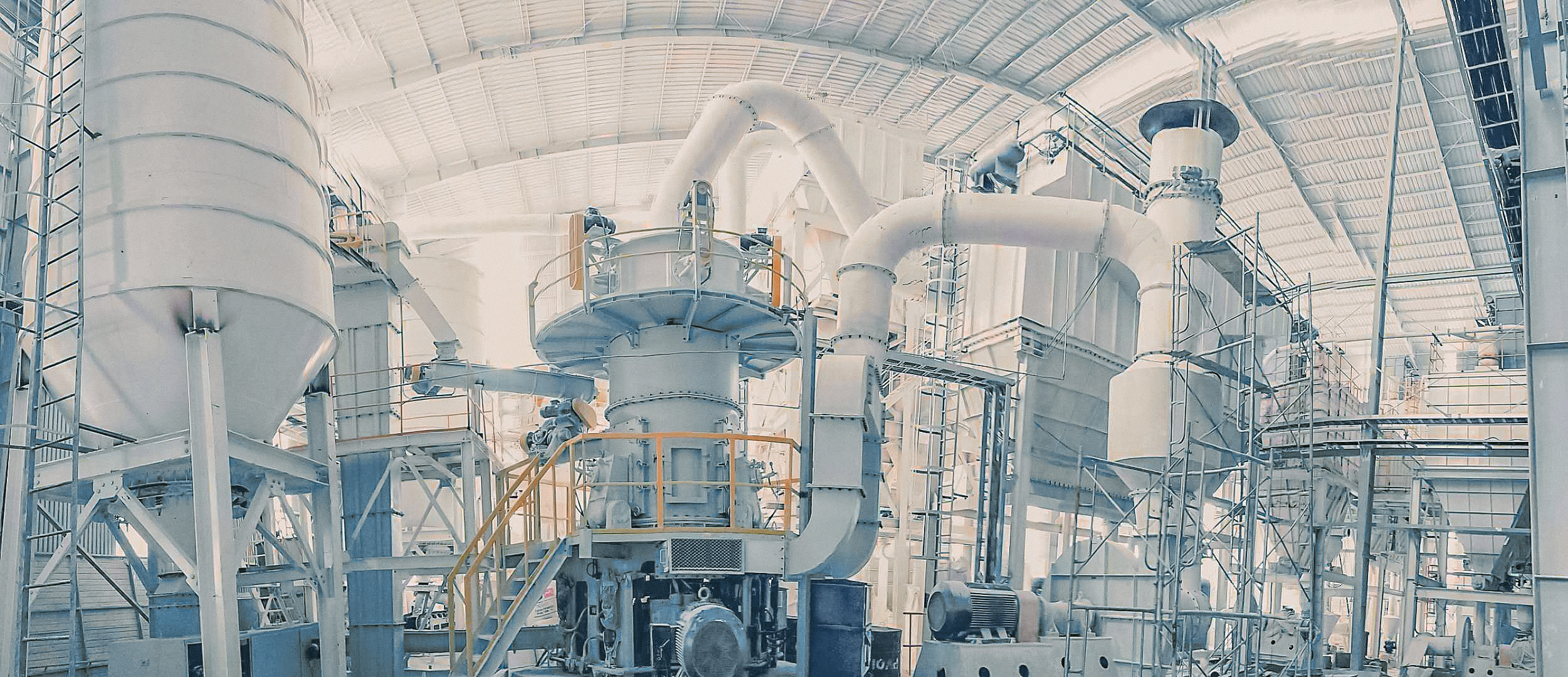Vertical roller mill is a kind of grinding equipment of "material bed crushing". Compared with the ball mill of "single particle crushing", there is a big difference.
In traditional cement production or other milling industries, the raw meal grinding system used is generally a ball mill grinding system. With the emergence of vertical roller mills, many defects of ball mills are slowly revealed. Vertical mills' unique grinding principle overcomes these shortcomings, especially the technically improved vertical roller mill has significant advantages compared with the ball mill system. Its process characteristics are especially suitable for large-scale cement production lines and can efficiently and comprehensively complete the grinding and drying of materials, and powder selection and conveying process.
The vertical roller mill is mainly suitable for the ultrafine powder processing of non-flammable and explosive brittle materials with medium and low hardness and Mohs hardness level 7. Ball mill is the key equipment for crushing materials after crushing. Vertical mill is a kind of grinding equipment of "material bed crushing". Compared with the ball mill of "single particle crushing", there is a big difference:

1. The energy consumption rate of the ball mill is low, and it has been gradually replaced by vertical roller mills, roller presses and other equipment, but the ball mill has the unique advantage of "the shape of the particles is approximately spherical, which is beneficial to the calcination of raw materials and the hydration and hardening of cement." This is the main reason why most clinker mills still choose ball mills.
2. Because the vertical mills' grinding method is reasonable, the grinding work is fully utile the material, and the classification is timely, which avoids the phenomenon of material over-grinding, so its grinding efficiency is high, and the power consumption is lower (above 30% energy saving than ball mills).
3. The vertical roller mill allows a large amount of air to pass through, so the drying capacity is large; the material in the mill is in a suspended state, which increases the contact area between the material and the air flow, and the heat exchange conditions are good, so the drying efficiency is high. (When the ball mill grinds wet raw materials, because of the limited air flow through the ball mill, additional drying equipment is usually installed in front of the ball mill.)
4. The vertical roller mill occupies only 50% to 70% of the space of the ball mill, and the physical space occupied is relatively smaller.
5. Lower initial cost. The initial construction cost, operating cost and maintenance cost of the vertical roller mill are only 70% to 80% of the ball mill equipment.
6. The granularity of the material entering the mill is large, generally up to 3%-5% of the diameter of the grinding roller. Large mills allow a large granularity of the feed material. Therefore, the large and medium-sized vertical roller mill can save the secondary pulverization. (The ball mill is limited by its larger steel ball diameter and can only feed smaller raw materials.)
7. The fineness of the product is easy to adjust, the particle size is uniform, and the chemical composition is stable. (The proportion of fine powder in the product produced by the ball mill is relatively low.)
8. Low dust and low noise are good for environmental protection. There is no collision between the grinding bodies and between the grinding body and the liner during the vertical mill operation, so the noise is low. The grinding and piping system of the vertical roller mill are relatively simple, with better sealing, and mostly negative pressure operation, so there is less dust.
9. The vertical roller mill has a short conversion time, which can convert different raw materials on the same mill in a very short time to produce different products. (The ball mill is the opposite.)
10. Low vertical wear. There is no direct contact between metals during operation, so metal consumption is small. Therefore, the parts wear less and have a long life. The metal abrasion per unit product is generally 5-10 g/ton. (And the ball mill uses the collision friction method, so the abrasion is high.)
11. The process flow is simple, the equipment is installed vertically, and the mill grinds, drys and classifies the materials at the same time, so the area is small, the probability of failure is low, and the money is saved.
12. Vertical roller mills are not suitable for grinding hard and abrasive materials, with short service life and frequent maintenance. Moreover, its wear parts are more expensive than ball mills, but compared with the total maintenance of the ball mills, elevators, powder separators and other equipment it replaces, it still appears simple, easy to maintain and has a small workload.